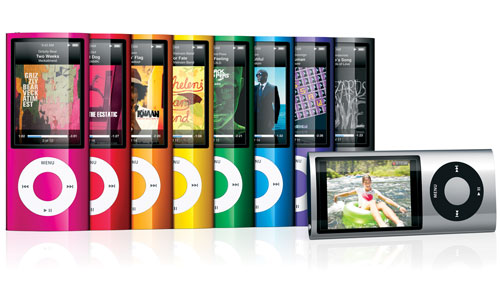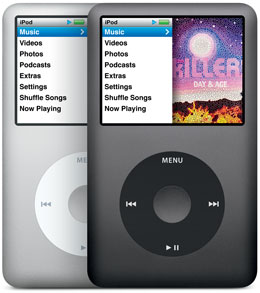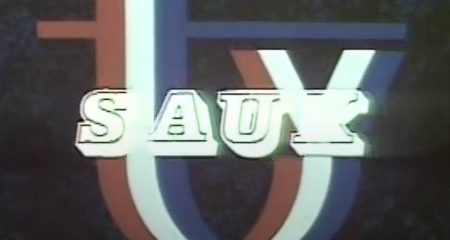
Apple introduced its first iPod on 23 October 2001. Almost eight years later, and no other product has come close to the unseating the digital music player.
Microsoft has been trying hard with the Zune and Zune HD, but it’s failing to gain much traction. And the products developed by Asian manufacturers, though generally cheaper, are not nearly as good as the iPod.
Apple recently refreshed the iPod line ahead of the traditional end-of-year spike in demand. The new iPod Nano is the stand-out product in the new line-up, though the Classic and Touch have also received new coats of paint.
TechCentral has been playing around with the new Nano and the new Classic. These are our thoughts on them.
iPod Nano
The new iPod Nano is a remarkable device. The first thing you notice about it is its size and weight. Just 6,2mm thick, the Nano weighs just 34g. It comes in nine colours (Apple added pink to the original eight colours) and storage capacity has been bumped up to 8GB and 16GB — enough to store either 2 000 or 4 000 average-length songs.
The new Nano also has a built-in VGA video camera, microphone and speakers. Users can shoot video at a resolution of 640×480 pixels and upload it to YouTube via iTunes. The video quality is not that good, but it is amazing that Apple has managed to squeeze a video camera into a device this light and thin. So expecting the video quality to be top-notch is expecting too much.
A problem with the camera, though, is that the lens is at the rear-bottom of the Nano. This means you’ll constantly be getting your fingers in the way of the image you’re trying to shoot. There’s probably a technical reason Apple couldn’t place the camera at the rear-top of the device, directly behind the screen. But it’s annoying.
The new Nano is the first with a built-in speaker, so you don’t need to plug in headphones. The sound is a little tinny, but that’s also to be expected in a device this tiny. If you want high-fidelity audio, you’ll need to use headphones.
Another first for the Nano is the built-in FM radio. It uses the Nano’s headphones as an antenna and works well. The software that controls the radio is well designed, making it easy to tune into channels. The coolest feature, though, is the ability pause live radio and resume listening at a time more convenient to you. That’s a killer feature!
The Nano also has an accelerometer (motion sensor), so when you flip it on its side, it brings up Apple’s “Cover Flow” software — making it easy to flip through the covers of albums you’ve uploaded to the device.
And if you want to shuffle songs, just give the Nano a gentle shake. Be warned, though: you may get a few odd glances from people around you who may wonder why you’re shaking your fist in the air.
Another cool feature of the Nano is its spoken menus option, allowing you hear the names of menus, song titles and artists without viewing the screen. This technology was first introduced in the Shuffle, the tiny, screen-less iPod.
In summary, it’s hard to fault the new Nano. It’s a beautifully designed digital music player and streets ahead of anything else out there. We’d just like to see versions of the Nano with more built-in memory. That, too, will come, though, as flash memory prices continue to fall.
The 8GB version retails for R1 900; the 16GB device costs R2 500. You may find both versions a little cheaper than that if you shop around.
 iPod Classic
iPod Classic
We were disappointed that Apple didn’t announce any major changes to the iPod Classic, other than an increase in the capacity of the device from 120GB to 160GB.
The Classic is the iPod people who have a lot of music buy. The 160GB hard drive means that, unless you’re a real music aficionado, you’ll be able to carry your entire collection around with you. That’s useful if you keep your iPod in your car, and want immediate access to all the music you own. The Classic will story up to 40 000 average-length songs in 128Kbit/s AAC format.
Battery life has also been improved. Apple claims the Classic will now playback audio for up to 36 hours on a full charge. Video playback is up to six hours. In real-world conditions, don’t expect performance quite that good, though.
Charging times have also been improved. Two hours plugged into your PC or Mac’s USB port will deliver an 80% charge; four hours will charge it completely.
We really think Apple should have included some of the nifty new features in the Nano in the Classic. One really has to wonder why the company has chosen not to integrate an FM radio and accelerometer into the Classic.
Perhaps those features will come in the next refresh of the Classic.
Still, the Classic, which costs about R3 300 (again, you may want to shop around), comes highly recommended for people with large music collections. It’s a mature product and delivers what it promises. — Duncan McLeod, TechCentral




